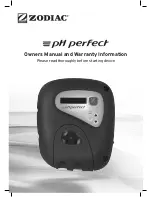
41
CHECKING THE FINAL GRADE
There should be a minimum of 1½” 't
o 2" between the finish grade strings, and the dirt
excavation. The walls, floors, and slope should all be flat and as smooth as possible to avoid
excessive vermiculite use. Hand trim areas that are too high. Fill and pack low areas and voids
with clean sand. Fully remove any tree roots or rocks. String across the slope diagonally from
the deep end corner stakes up to the 2" pool floor line on the bottom of the pool wall panels.
This will give you a more accurate view of the excavation. Starting from the shallow end wall,
run an additional string down the center of the shallow end, over the break, and down the
slope to the beginning of the deep end floor. This will help when spreading the concrete in the
finishing process, particularly for larger pools.
POSSIBLE POOL BOTTOM MATERIALS OPTIONS
SAND - A fine grade, stone free, clay-bearing sand can be used as a base for the liner. To insure
firmness, it must be tamped/packed down thoroughly and then troweled/spread evenly. Spray
a fine mist of water over the sand to help compact it and make it easier to spread. Spray
misting should be done periodically to keep the sand moist until the liner is installed. The
disadvantage of a sand pool base is that it will show depressions and indentations from usage.
A sand pool base is not recommended in areas of high-water tables.
STONE DUST - This material packs harder than sand but is troweled and worked similar to sand.
GROUT - Mixing sand and Portland cement provides a hard surface for the pool bottom,
eliminating the depressions found in sand bottoms. It is an acceptable base for a liner in
unstable ground conditions (clay or high-water table). Spray with a very fine mist until evenly
damp. Be careful not to wash the cement away or premix one shovel of Portland cement to 5
to 8 shovels of sand. Use round pool trowels to apply.
VERMICULITE, SAND AND PORTLAND MIX- Using a paddle mixer, combine ½ of a 94 lbs. bag
Portland cement, 1 bag vermiculite and 25 shovels of mason sand; mix well. Add a minimal
amount of water to form a workable mix. Do not over mix after adding water; no more than 2-
3 minutes of mixing post water.
VERMICULITE - If groundwater is encountered or the ground is extremely unstable/disturbed, a
vermiculite cement mix is recommended. Follow the instructions for the particular brand you
choose.
TIP
Be sure to check strings during finishing of the pool bottom to see that they are tight, and
not sagging.
















































